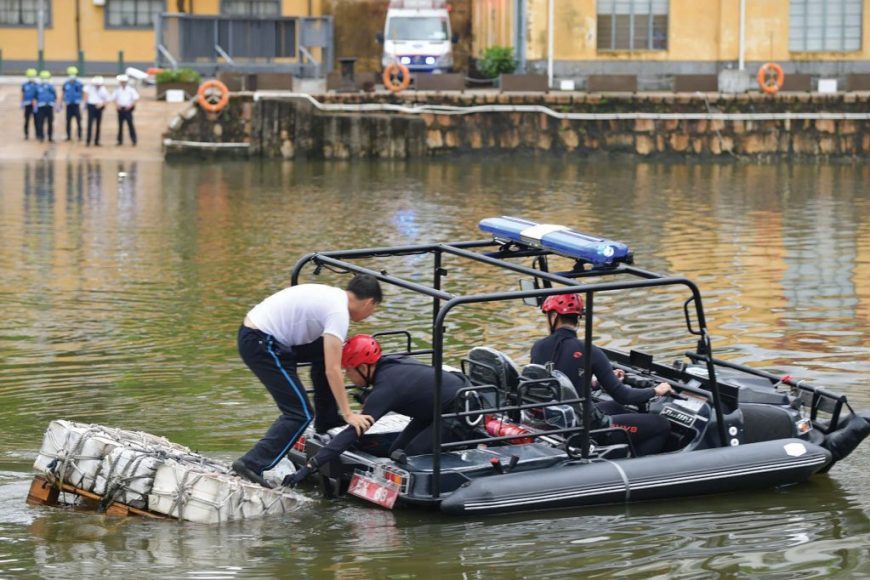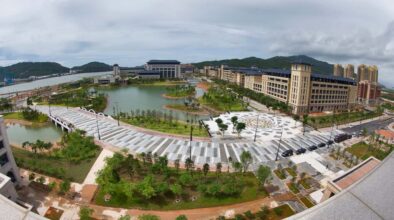Following April’s Crystal Fish evacuation and civil defence exercise – and with a possible four to six cyclones expected to hit Macao this year – the police say the SAR is getting better prepared for typhoons that could hit in the future.
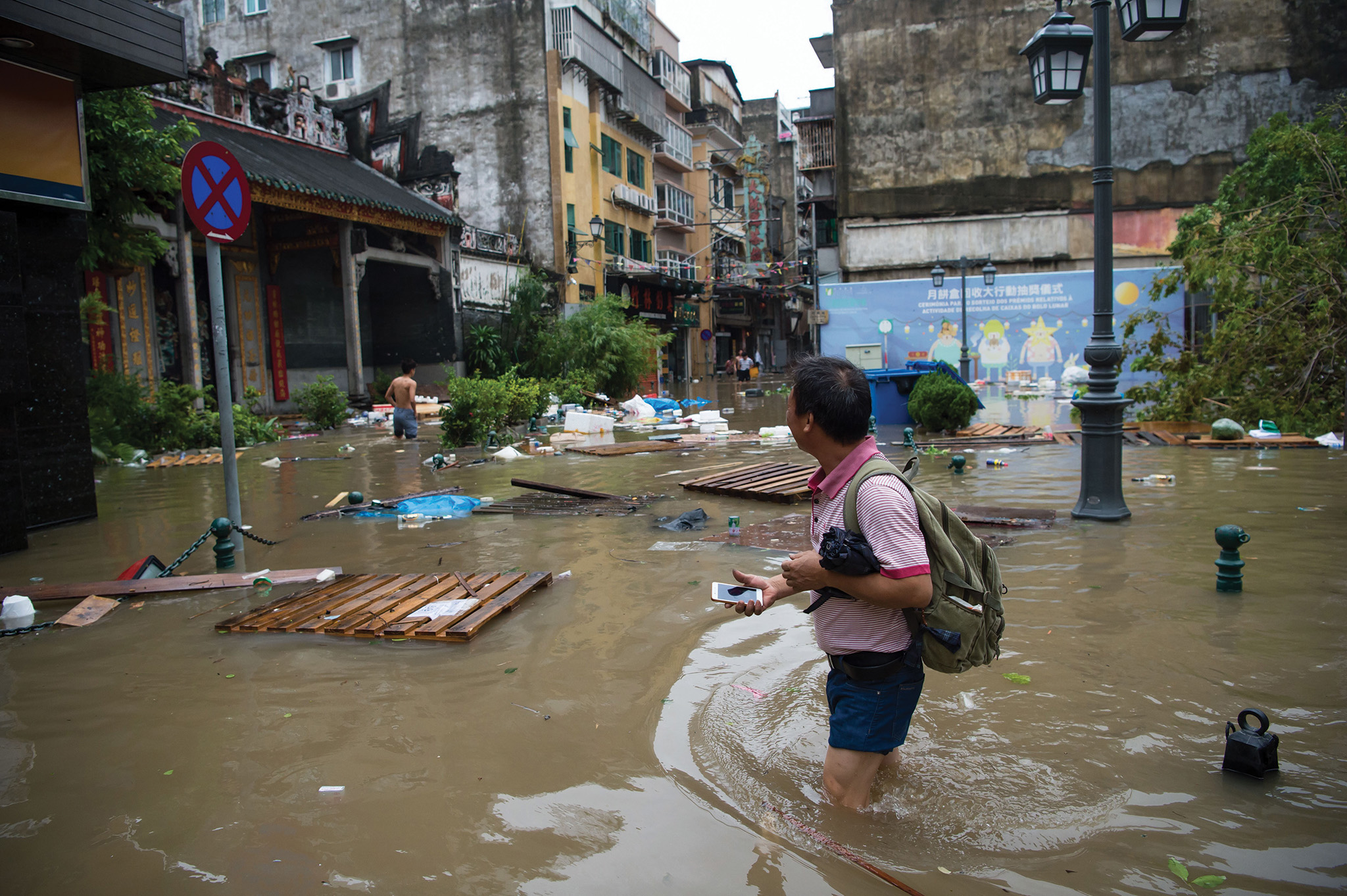
Everyone in Macao remembers 23 August 2017 – the day when Super Typhoon Hato battered the city, claiming up to 10 lives, injuring more than 200 people and laying waste to properties with its high winds and flooding. It was the strongest storm to hit Macao in 53 years, with citywide power and water outages lasting for more than 24 hours. Some estimates put the cost to the city up to MOP12.55 billion (US$1.56 billion) – and most put the cost to life at a much higher price.
Fast forward a year and few will also have forgotten 16 September 2018, when Super Typhoon Mangkhut hit the SAR, injuring around 40 people, with about 21,000 homes losing power during the day and all of the entertainment resorts being closed for the first time. Mangkhut was slightly stronger in terms of wind speed than Hato – however, no-one died, 5,650 people were evacuated from low-lying areas and the total damages this time around were reported to be much less at MOP1.74 billion (US$216.4 million).
Following the tragedy of Hato, the damage to both people and to property caused by Mangkhut was kept to a minimum thanks to a raft of civil defence measures that the government had instigated in response to what happened during Hato. It paid off – Macao saw the storm coming, it responded and the chaos was minimised.
Since the apparent success of dealing with Mangkhut, however, the government and the police have not rested on their laurels. More can be done to prepare for and to deal with the destruction that a mega-typhoon brings. And with an estimated four to six tropical cyclones to hit the city this year, according to the Meteorological and Geophysical Bureau (SMG), the police, government and the people have been preparing.
Year of the Fish
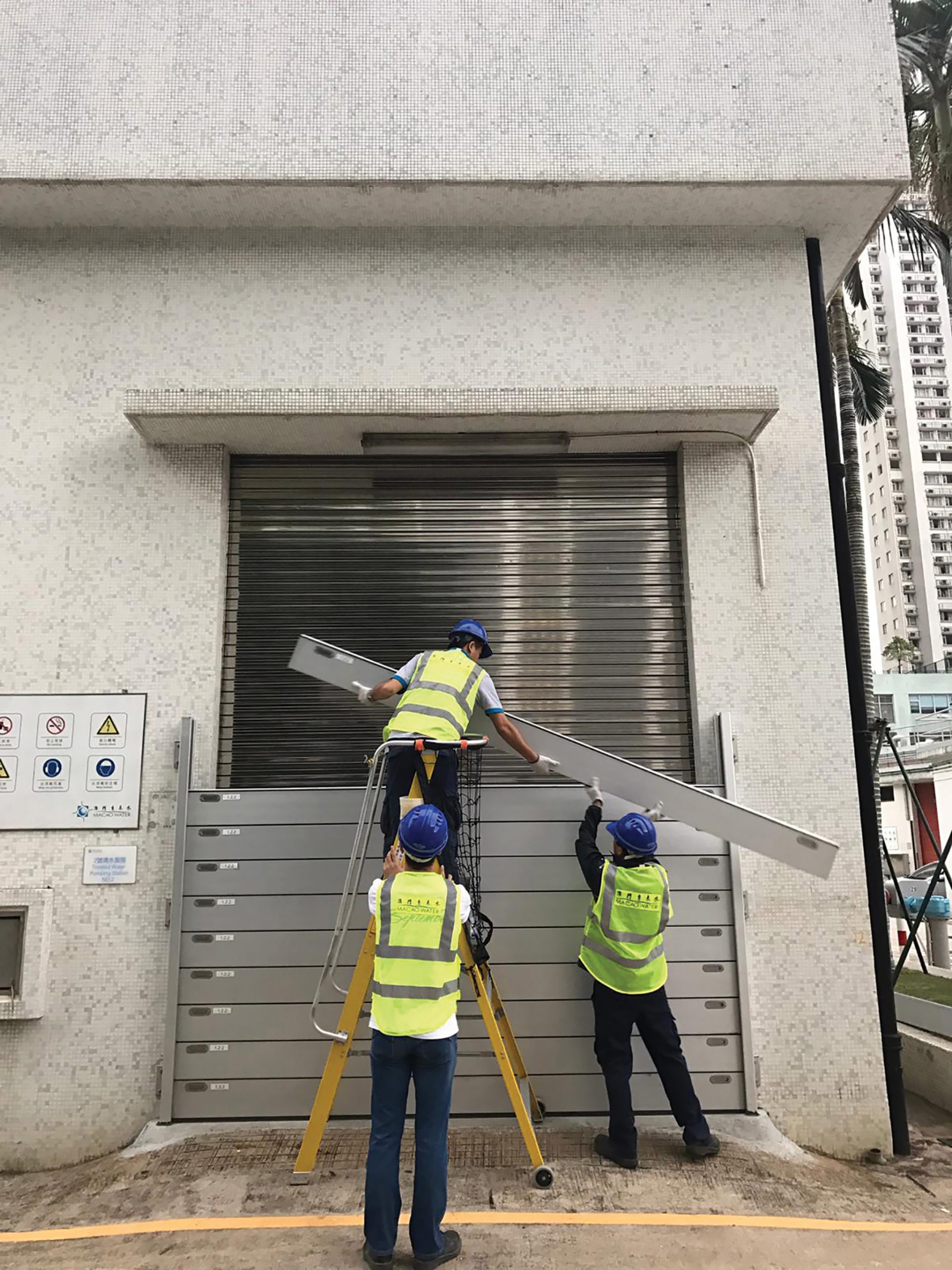
One of the preventative measures that is believed to have greatly aided the zero death toll and smooth minimisation of destruction during Mangkhut was Crystal Fish. This exercise, on 30 April 2018, was the city’s first-ever typhoon drill and the government soon after reported that it had succeeded in testing its recently drafted evacuation plan, as well as its recently designed command platform for emergency response, with all of the government entities and private organisations in the authority’s civil protection structure taking part, including law enforcement, hospitals, the weather bureau and water and power companies.
It was a success to build upon, so this year’s ‘Crystal Fish 2019’ added one new – and arguably the most important – ingredient: the residents themselves. On Saturday, 27 April a total of 2,546 people participated in the second Crystal Fish typhoon exercise. About 2,100 staff from the civil protection structure system took part in the drill but there were also 360 residents of Macao, including 47 local associations – marking the first time residents have been allowed to participate in this kind of exercise. A total of 1,330 households were evacuated – and, overall, the police say it ‘went smoothly and achieved the expected results’.
Assistant to the commissioner-general of the Unitary Police Service, Ng Kam Wa, who also heads the Service’s civil defence and co-ordination centre, spoke to Macao Magazine following the exercise. He says: “The drill went smoothly and members of the civil defence team delivered a better performance than last year in terms of reporting, coordination, follow-up, communications and announcements. The relevant working groups of the Civil Defence Action Centre were more coordinated and organised. The evacuation [simulations] in the five districts were also more efficient and standardised. The frontline and the residents were more closely coordinated – although there is still room for improvement.”
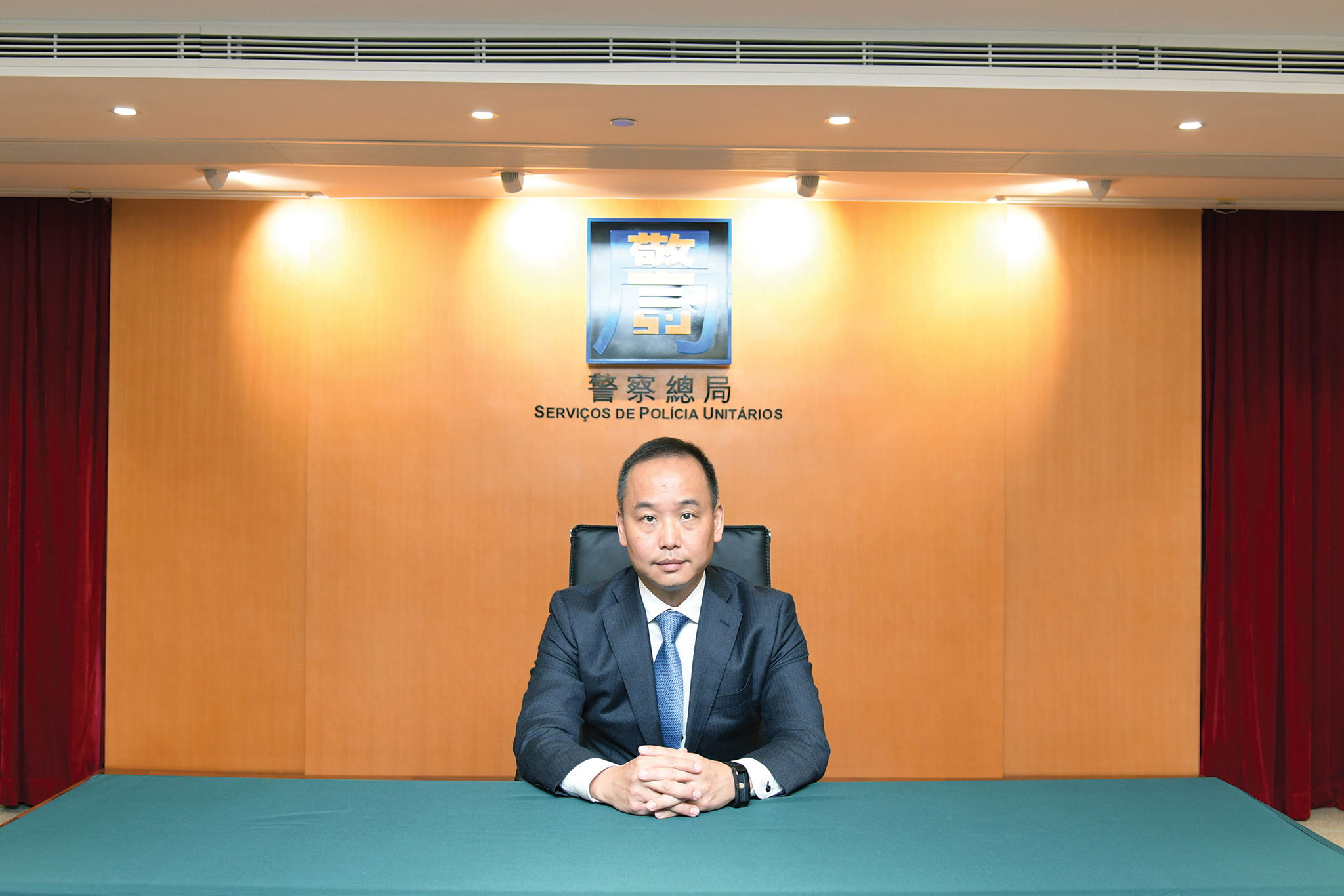
Ng says that the ‘overall performance’ at Crystal Fish 2019 had ‘improved compared with last year’s drill’. “However,” he noted, “the challenges faced by the civil defence work are getting bigger and bigger, so we must not take it lightly. We need to continue to work hard and improve – and respond to future natural disasters and public emergencies at a better level. In fact, civil defence work is a shared responsibility within [Macao’s] society.”
The five-hour exercise on 27 April was commanded from the Civil Protection Operation Centre located at Pac On – but there were also exercises outdoors in Coloane, Ilha Verde, Fai Chi Kei, Inner Harbour and São Lourenço, with drills imitating a range of incidents that could happen during a typhoon, including traffic accidents, trees falling and floods. It was mostly focused on low-lying areas of Macao. The police says they also simulated ‘taking appropriate measures to handle residents who refuse to evacuate’, as well as ‘settling conflicts at emergency centres’.
Sirens were heard across the Inner Harbour and, it was reported, some school students also joined in. Plus, a number of local organisations – including the Macau Construction Machinery Engineering Association and the China State Construction Engineering Corporation – participated in special disaster relief simulations, including large-scale clearing work after a typhoon. Ng says that during the exercise, a range of rescue equipment was used, including amphibious vehicles, large police drones, hydro bikes with life-saving panels, rubber boats, unmanned exploration vessels and cable-controlled underwater robots.
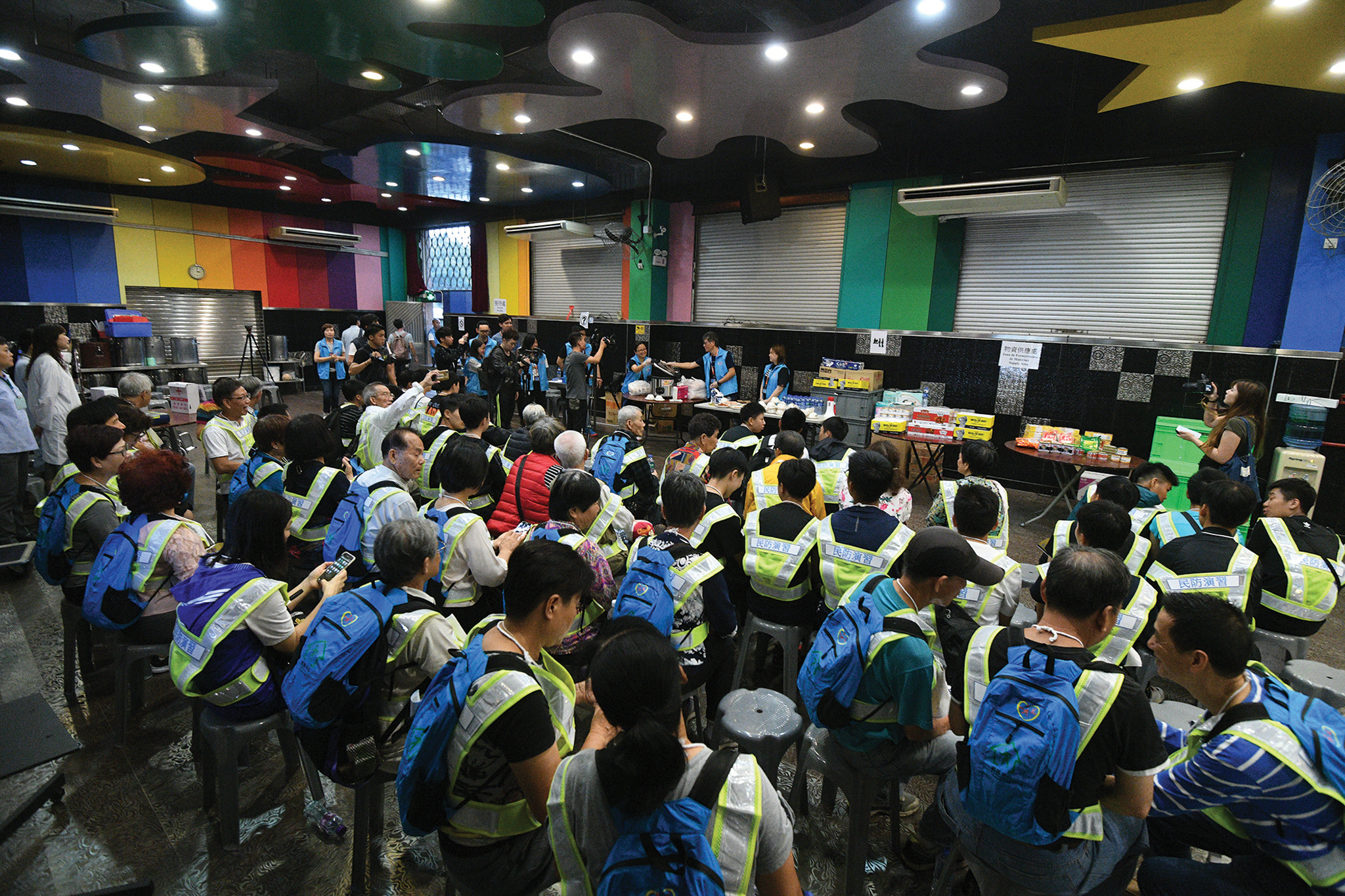
An annual exercise
Crystal Fish is the name of the simulated super typhoon that takes the starring role in the operation. Since the drill, the police have confirmed that it is set to become an annual exercise, with next year’s – yet to be given an exact date – taking place before typhoon season at a similar time to this year’s event. Ng says the name is important as ‘once the public hears Crystal Fish, they will know that it is a civil defence drill’.
“When Hato hit Macao,” says Ng, “the entire city was overwhelmed. It was really a painful alarm. Not only the disaster relief work had to be improved but also the prevention work before the disaster strikes – otherwise we will not know how to deal with it. Therefore, we must understand disaster prevention, mitigation and response.”
In terms of civil defence education, Ng says that police and civil defence ‘promotion teams’ will host ‘various education and promotional activities in local communities, institutions and schools to remind the public of the preparation and prevention of typhoons’. “In the future,” he added, “we hope that the general public will continue to support civil defence work, especially in various emergency drills – such as evacuation drills. The public can participate in them to become more familiar with the process. In the event of a disaster, the losses and damages can be minimised.”
Kin-Sun Chan, assistant professor in the Department of Government and Public Administration at the University of Macau, co-wrote the paper ‘A Study on Crisis Management of Typhoon Hato in Macau’ last year. He says that drills like Crystal Fish help the city to better prepare for dealing with typhoons. “Practice makes perfect,” he says. “These drills give the government more chances to practice rescue plans and to make use of newly purchased equipment. For the public, the drills can train them to help others during a typhoon, when it may be difficult for the government to provide direct services and it may be necessary for residents to work with policemen or firefighters.”
Chan notes that the estimated economic loss experienced during Mangkhut was much lower than Hato, putting the reason down to many factors including public awareness, new equipment and drills like Crystal Fish. He says he expects the trend to continue as long as ‘the government can keep on with the drills and the public still pays attention to the issue’. He also mentions that the drills and public awareness campaigns by the government could lead to new measures to help the city, such as creating ‘healthy buildings’, where all residents in a building work together for social health and well-being, or spark new urban renewal policies for older areas of the city, where some of the tragedies during Hato occurred.
Building up the kit
It was announced in April – ahead of Crystal Fish 2019 – that the government had spent about MOP43 million (US$5.35 million) this year purchasing new equipment for civil protection purposes, adding to its spend of MOP70 million (US$8.71 million) on civil protection equipment last year. The government also pledged to continue evaluating and working to improve disaster relief works and – if needed – to purchase more equipment.
Ng says that, this year, the Customs and the Security Police Department are increasing their life-saving facilities. For example, he says, they will use amphibious vehicles to aid residents living in low-lying areas during the storm surge. “A lot of citizens were trapped by floods and failed to escape in time,” he says. “They needed the help of personnel and rescue tools. As they can be used on the land and in water, they are especially useful for entering the small narrow streets and slopes in Macao and have greatly improved the efficiency of rescue missions.”
The new equipment bought via investment from the government earns praise from Chan. “This expenditure can catch the public’s attention,” he says, “and show the determination of the government to fix the issue. I really feel that the expenditure is a good thing.”
One of the organisations involved in this year’s Crystal Fish was disaster relief network Macau Red Cross, which helped in the staged evacuation of the low-lying areas and transported four people with disabilities to the city’s special shelters known as ‘safe haven centres’ so they could ‘be protected during the typhoon’. The organisation is a member of the government’s civil defence structure and has its own civil defence team made up of volunteers and staff who are trained to deal with civilians during a typhoon, particularly when it comes to transferring people with mobility problems to the shelters.
Philip Chou Kuok Hei, vice president of Macau Red Cross, praises the government’s strengthening of civil defence and disaster prevention measures, including evacuation plans in low-lying areas, public awareness and rescue equipment, after Hato. “As a result,” he says, “during Mangkhut, the damage was reduced to a minimum. After two strong typhoons, the SAR government has continuously developed the civil defence structure. Crystal Fish 2019 allowed the public to participate and continuously improve their awareness of disaster prevention and preparedness. The government and the public are working together to increase the resilience of the community.”
When Hato hit Macao, the entire city was overwhelmed. it was really a painful alarm. Not only the disaster relief work had to be improved but also the prevention work before the disaster strikes — otherwise we will not know how to deal with it.
Ng Kam Wa
Chou cites the importance of residents learning first aid techniques as part of the training that citizens can undertake to deal with typhoons. “People who have the correct first aid knowledge can help each other and, most importantly, save themselves,” he says. “Macau Red Cross has been promoting first aid in the community. At the same time, our first aid team is open to everyone. People can join our team and enhance their first aid skills through volunteer services so they too can give back to the community.”
The Social Welfare Bureau (IAS) has a total of 17 shelters which can be used during evacuations in typhoons with 266 employees working at these centres. Eleven are on Macao Peninsula, two are in Taipa, two are in Cotai and two are in Coloane. Each can accommodate around 24,000 people and include basic materials like water, dried food, mattresses and TVs, as well as rice and milk powder. Five of the centres will have doctors and nurses stationed there during a typhoon as well as medical equipment like blood pressure devices.
Keeping people safe isn’t just about sheltering them during a typhoon. It’s also about information gathering to prevent any loss of life and to relay details to civilians. And it is not just the government that is involved in this. Gaming operator Sands China Ltd is strongly committed to this for its guests and staff. Senior vice president of resort operations and development, Mark McWhinnie, explains: “We saw a totally different landscape after typhoon Hato struck and realised that there were a number of gaps that needed to be filled.”
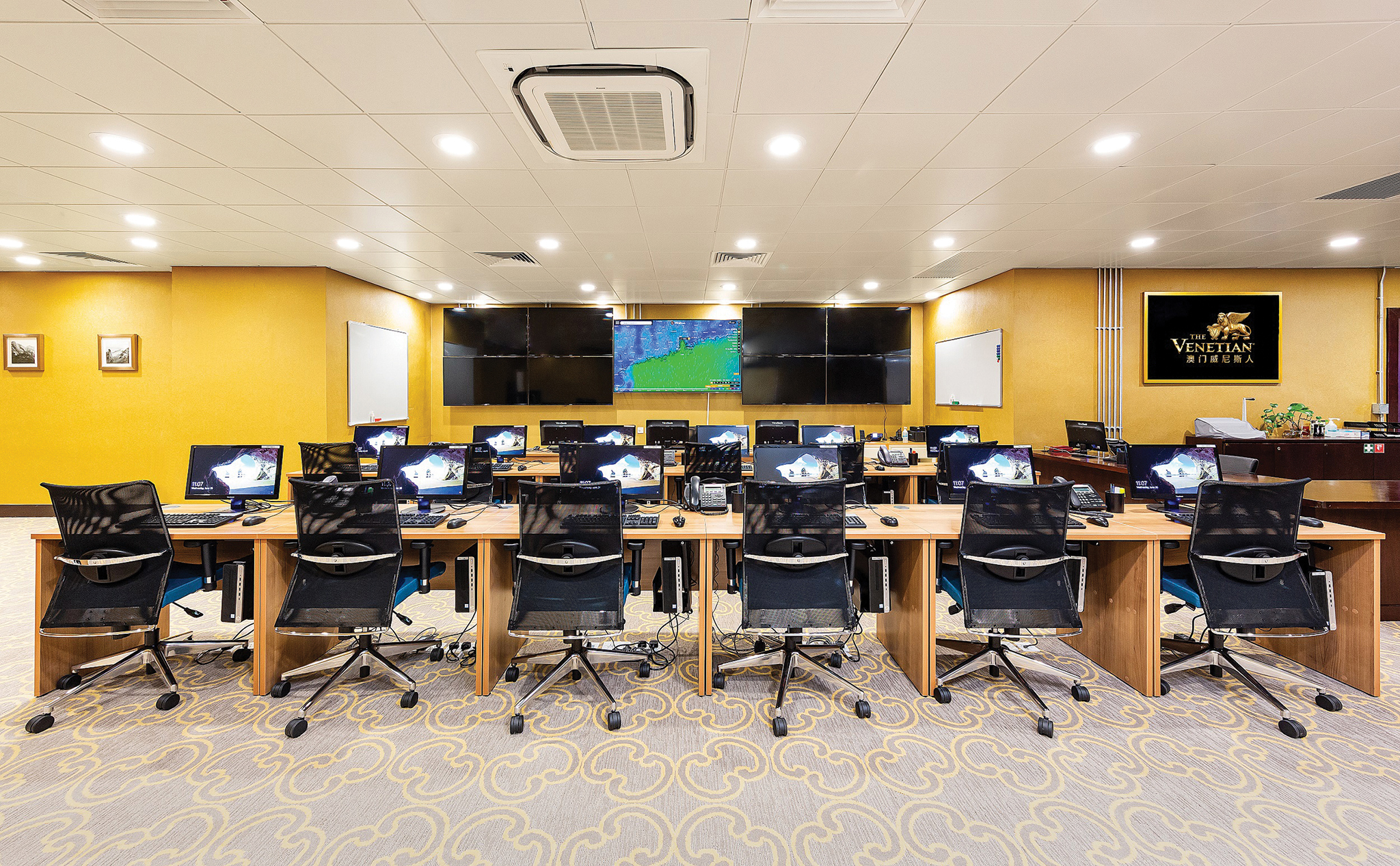
Three months ago, Sands China completed an Emergency Operational Centre at The Venetian which can be used during typhoons or any other crisis situations. The facility is situated near the conference centres to make it easily accessible to executive staff coming from each of the Sands properties: The Venetian, Sands Cotai Central and The Parisian. It has 15 computers and a surveillance video wall that shows what’s happening outside of all its resorts in the city. Two of the screens are used to broadcast local and international news, so the team knows what is happening in the world outside. “In previous typhoons,” says McWhinnie, “we were acting on the best information we had available but not necessarily the right information. But now we can make an informed decision with eyes and ears on the ground.”
The aim is for all the information to come to one single point of contact and for each department to have a representative at the centre making it easier to strategise in times of crisis. The centre is run on emergency generators and it has direct lines to CTM and satellite phones in case communications are compromised. On one side of the room, there are also hundreds of maps and plans of the properties, if needed. The centre runs 24 hours a day with staff on standby for any emergency situation.
Learning from the past
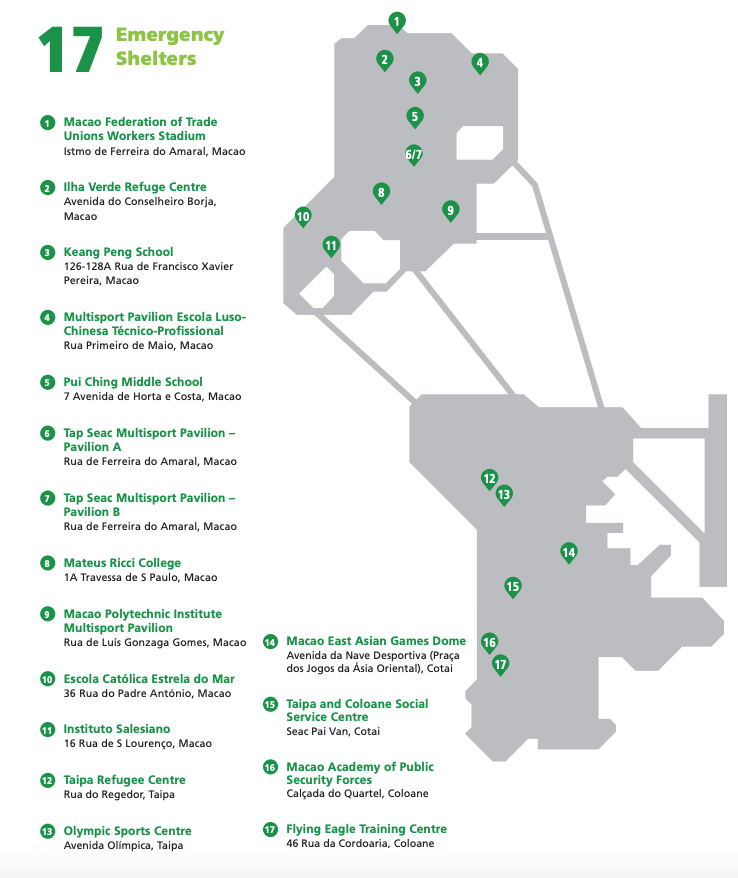 Ng says that, when Mangkhut hit Macao, ‘we were able to coordinate and cooperate with people from all walks of life’ and, as a result, ‘we managed to minimise the number of casualties – no death toll was recorded’. “During this year’s [Crystal Fish] exercise,” he says, “we also simulated sending messages regarding evacuation and accidents to the public through SMS, media and social media platforms to ensure early prevention of disasters – messages informing people about IAM dredging the ditch and CEM closing the waterproof gate and cutting the power in response to the flood caused by the storm surge.
Ng says that, when Mangkhut hit Macao, ‘we were able to coordinate and cooperate with people from all walks of life’ and, as a result, ‘we managed to minimise the number of casualties – no death toll was recorded’. “During this year’s [Crystal Fish] exercise,” he says, “we also simulated sending messages regarding evacuation and accidents to the public through SMS, media and social media platforms to ensure early prevention of disasters – messages informing people about IAM dredging the ditch and CEM closing the waterproof gate and cutting the power in response to the flood caused by the storm surge.
“Simulations of scenarios such as local professional groups cleaning up the large buoys that wash up and block road traffic, and repairing and filling in holes on the roads, have been conducted in order to examine and improve emergency mechanisms and enhance the synergy between government agencies and local groups.”
Chan is similarly upbeat about the future. “In general, most Macao residents feel the city is very safe,” he says. “The typhoon warning system can alert residents to an incoming typhoon and the proactive preventative measures and evacuation plans that are in place should minimise any potential disasters. We should never see the losses, both economically and to life, that were caused by Hato, or even by Mangkhut for that matter, ever again in Macao.”
More super typhoons hitting Macao there will be. But thanks to Crystal Fish, government spending and the preparation work of the people in the SAR, it is hoped that tragic day in 2017 will never be repeated and that getting through the next storm ends up being a breeze.
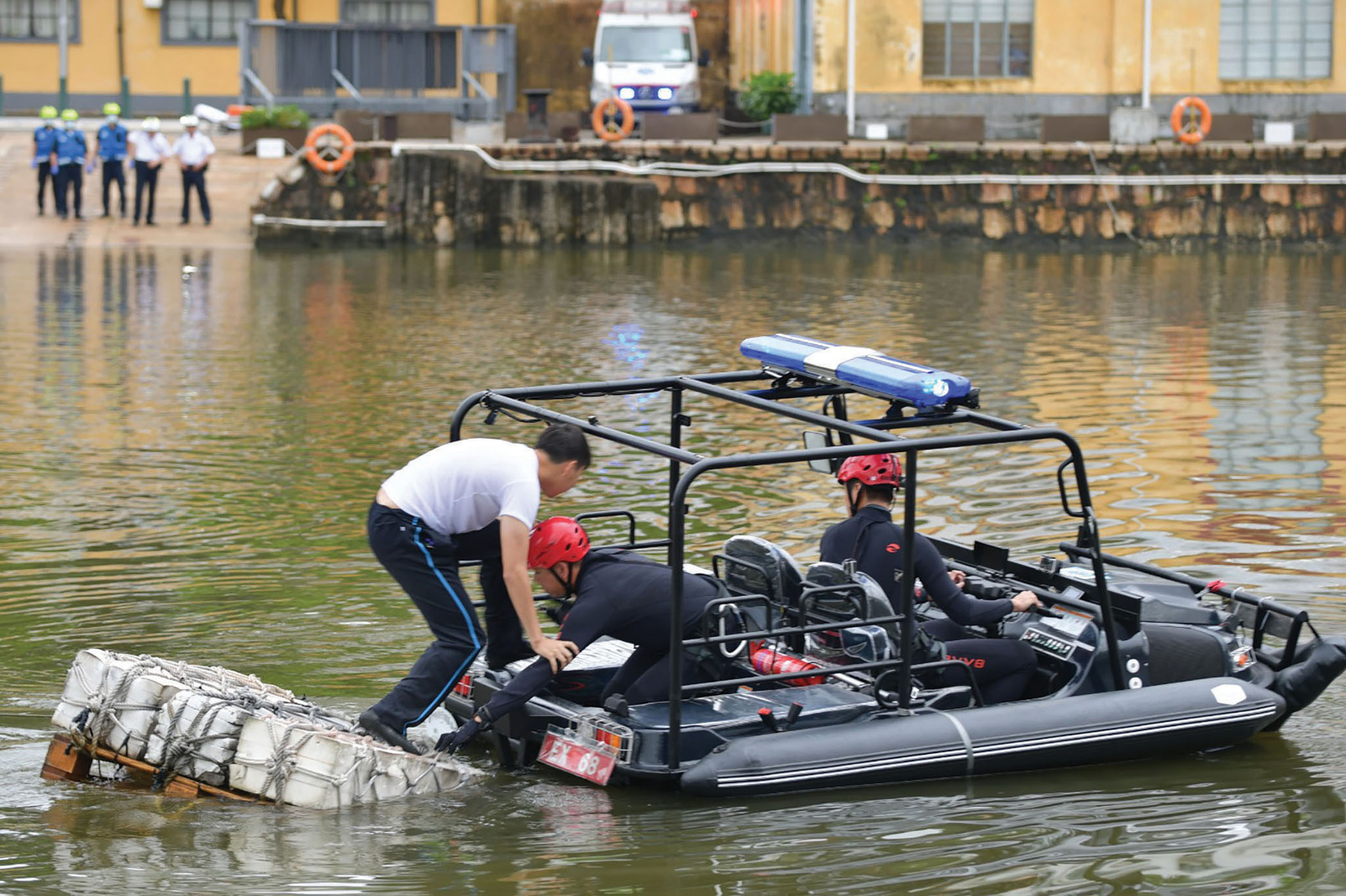
To find out more about Crystal Fish or for information on disaster prevention in typhoons, call the Civil Defence and Coordination Centre Hotline on +853 8897 0170 or +853 8897 0160.
